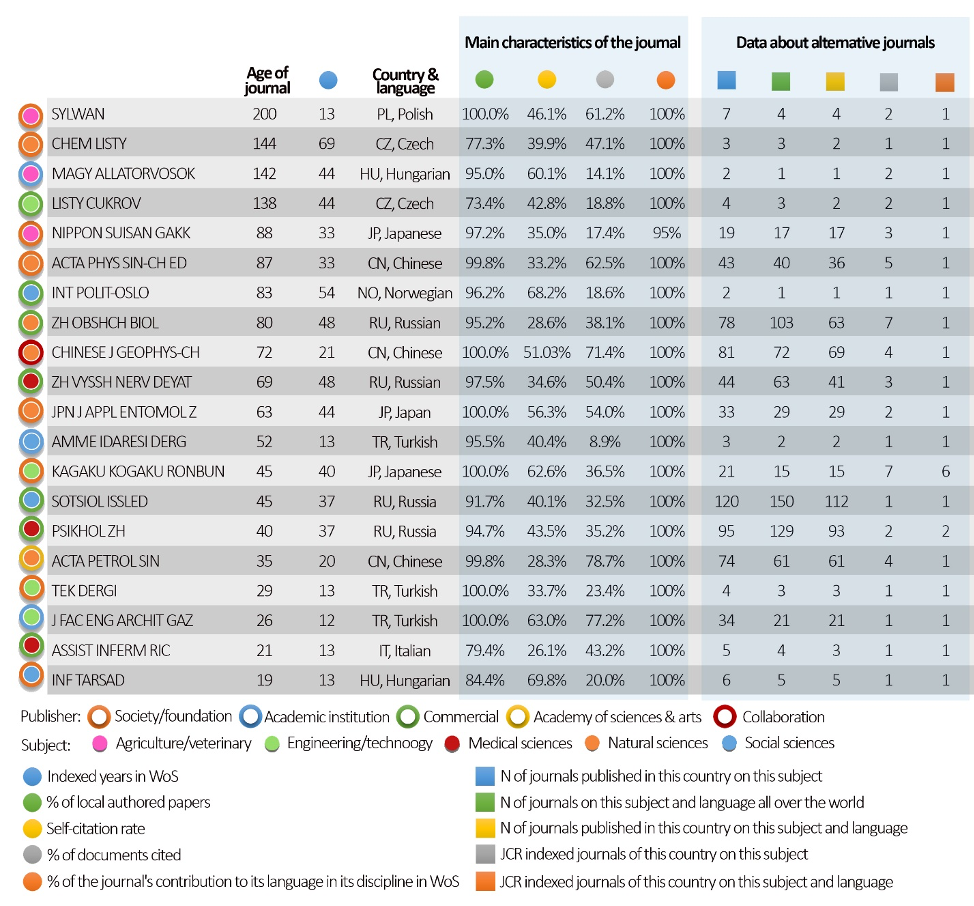Science, when communicated exclusively in English, risks not fully meeting its third mission, which is to inform the public. Never before have we seen this phenomenon as intensified as it has been throughout the COVID-19 pandemic. Ideally health-related studies, measures, and responses can be produced and examined by scientists, professionals, governing authorities, and individuals with the benefit of time. In the case of COVID-19, scientific communities have been called upon to assert new knowledge that will satisfy a remarkably urgent dual mission. Doing that only in English will leave many people behind, write Zehra Taskin (Adam Mickiewicz University), Guleda Dogan (Hacettepe University), Emanuel Kulczycki (Adam Mickiewicz University), and Alesia Ann Zuccala (University of Copenhagen).
Whilst front line medical professionals are working around the clock (and around the world) to save humanity from this highly communicable disease, public officials are tasked with informing and securing the public’s cooperation in order to protect the most vulnerable. According to U.S. Department of Health & Human services, new scientific discoveries are needed not just to help doctors, medics, and nurses prepare treatments or cures for the ill, but help people in general with taking appropriate decisions. This has been complicated by the fact that misleading and/or speculative information can now rapidly circulate online via social networking platforms.
Still, thousands and thousands of new scientific research articles are currently being deposited online as preprints, if not published in journals daily. The COVID-19 pandemic is an international crisis; hence, the third-mission of science is not and should not just be about communication for the English-speaking world.

What portion of the scientific literature on COVID-19 is being published in English versus other languages?
According to the World Health Organization, a total of 10,728 papers were published from the day of the novel coronavirus outbreak (now known as COVID-19) to April 28th, 2020. The database includes not only scientific articles, but also different types of documents on COVID-19. Language information for 7,501 papers is accessible at the web site of the World Health Organization (WHO). Because the language for 3,227 papers has not been provided by this WHO web site, we have searched scholarly academic databases to collect this information. In addition, ULRICH database has been used to collect country of origins of journal publishers. Figure 1, below, presents the overall language distribution for this dataset.

Figure 1. Languages of articles on COVID-19 and publishers’ country of origins
Note from Figure 1 that up to 85% of the articles from the WHO dataset, defined as “Global research on coronavirus disease”, has been published in the English language. Scientists around the world are working overtime to produce research results that will contribute to the fight between humanity and COVID-19. Scientific journals are part of this race to contribute and have been publishing articles on different aspects of the virus. Figure 2 shows the geographical distribution of authors that have recently published papers on COVID-19.[1]

Figure 2. Distribution of articles to countries (interactive map: http://yunus.hacettepe.edu.tr/~ztaskin/COV/StatPlanet.html)
Note that 125 unique countries have been publishing articles on COVID-19. A total of 1,352 articles have produced by China-affiliated authors about the virus, and the United States has recently had 980 articles on this subject. In the countries that have been facing critical challenges with the virus – i.e., Italy, United Kingdom, Germany, Spain and France – scientists have also been maximizing their efforts to solve the spread COVID-19.
However, an aggregation of this data based on research efforts by country possesses a downside, particularly when it is communicated exclusively in English. The risk is that science is not fully meeting its’ third mission, which is to inform the public, and this means reaching people in their native languages. It is also unclear which recommendations stem directly from scientific evidence, and which do not; thus, misinformation or vague information circulating via social networks continues to be a threat to public health. At this stage government-ordered recommendations, mandates or policies can only be based on a “better to be safe than sorry” approach.
The importance of multilingualism in science
Important steps have been taken in recent years concerning multilingual publishing in science. The Helsinki Initiative on Multilingualism in Scholarly Communication was launched in 2019 in order to support locally relevant research. This initiative encourages the dissemination of research results in a way that protects national science infrastructures and promotes language diversity. All the suggestions put forth by the initiative further encourage scientists to share their research findings with the public. However, this does not mean that the initiative is against the production of research published in English. Primarily it was put forth to challenge performance evaluation systems, which put too much emphasis on English content, especially in countries where it can complicate or compromise the third mission of science, which is to inform the public. Moreover, it simply supports national science practices by suggesting that relevant policies are put in place, alongside the creation and maintenance of national databases for regional journals and regional-oriented evaluation practices.
Despite the importance of multilingualism in science, current research evaluation systems in many countries (especially in EU) set guidelines (including publisher lists) that encourage researchers to publish in prestigious or high-impact factor journals. There are no national journals listed in the Web of Science Journal Citation Reports (JCR) that have an impact factor of more than 3 and that publish in their own languages. It means that there are not enough incentives for scientists to publish in their native languages. Many national science policies encourage scientists to produce research in the English-language, and in instances of international collaboration, this is also necessary. To a large extent, this limits the proliferation of each countries’ own scientific journals and national language literatures.
Journals that are indexed in Web of Science and publish articles in their own languages have interesting common features. These features demonstrate why national science practices must be evaluated differently than international ones.
Common features of non-English journals
Here we uncover some of the key characteristics of journals that have published research in a country’s ‘native’ (other than English) language. In Web of Science, up to 3 million articles and reviews were published between 2016 to 2017 (JCR calculation year). 98% of these publications were written in the English language. We have analyzed 20 native language journals indexed in JCR for the JCR calculation year of 2016 to 2017. The results are shown in Figure 3.

Figure 3. Main characteristics of 20 regional journals which publish papers on their own languages
Note that these regional journals all have a deep-rooted historical background, yet most of their articles have not received citations. Whilst localized publishing practices are common in the social sciences and humanities, little has been done to explore local or national science publishing practices, yet our data (n=20) confirms that there are such journals for the natural sciences, agriculture, engineering and health sciences.[2] And, we have found that each of these journals has a high journal self-citation rate. Moreover, almost all have no alternative or similar competing journal in the same country from the same field and in their own languages.[3] The most important indicator for these national journals is that they are unique in their fields even though they have low impact factors. Hence, national research evaluation systems are advised to examine and give more consideration to national science practices, particularly when there is a need for public outreach in non-English native languages.
This post represents the views of the authors and not those of the COVID-19 blog or LSE.
[1] WHO dataset does not include affiliation data of authors. To gather the affiliation data, Doi’s and titles of articles were used, and different databases were searched (Scopus, Web of Science, PubMed etc.). As a result, address information for 4,863 articles were gathered. The map shows the distribution of 4,863 articles to the countries.
[2] For classification of Web of Science subject fields, OECD category scheme is used: http://help.prod-incites.com/inCites2Live/filterValuesGroup/researchAreaSchema/oecdCategoryScheme.html
[3] ULRICH Serials Directory was used to find equivalent journals. ULRICH subject fields are used to find the journals in the same subjects.






Science communication should naturally be in the local language. But the scientific literature is for experts, not for the public. As a climate scientist, I have an above average capability to read the scientific literature on COVID-19, but it is not my field, I would make many mistakes, would miss the overview and am much better served by good science communication. This goes even more so for the other 99% of the population.
In Germany we have a great podcast by a world leader German virologist (Christian Drosten). That is science communication. And ironically, last week he made an error because an article was written in Swedish and his Swedish was not as good as he thought.
For English language outputs, yes, you are right. English language scientific outputs are generally for scientists, and generally not for public. However, we believe that it is different for national/regional science practices. Please look at the figure 3. All these journals publish papers in different languages and their primary aim is different from international journals. For example, Sylwan is an agricultural journal of Poland and the aim of the journal is to inform foresters across country about how to protect forests. The main audience of the journal is not scientists. That’s why we need to consider multilingualism or bibliodiversity in research assessments. Our aim is to create awareness on the importance of multilingualism and the main differences of multilingual journals.
Third mission of Science? What are the first two please?
I fully understand the importance of articles in local languages. However, we should aim for true multilingualism and not just an enormous number of monolingualisms, which would hinder communication. Thus I see the translation of scientific articles as very important.